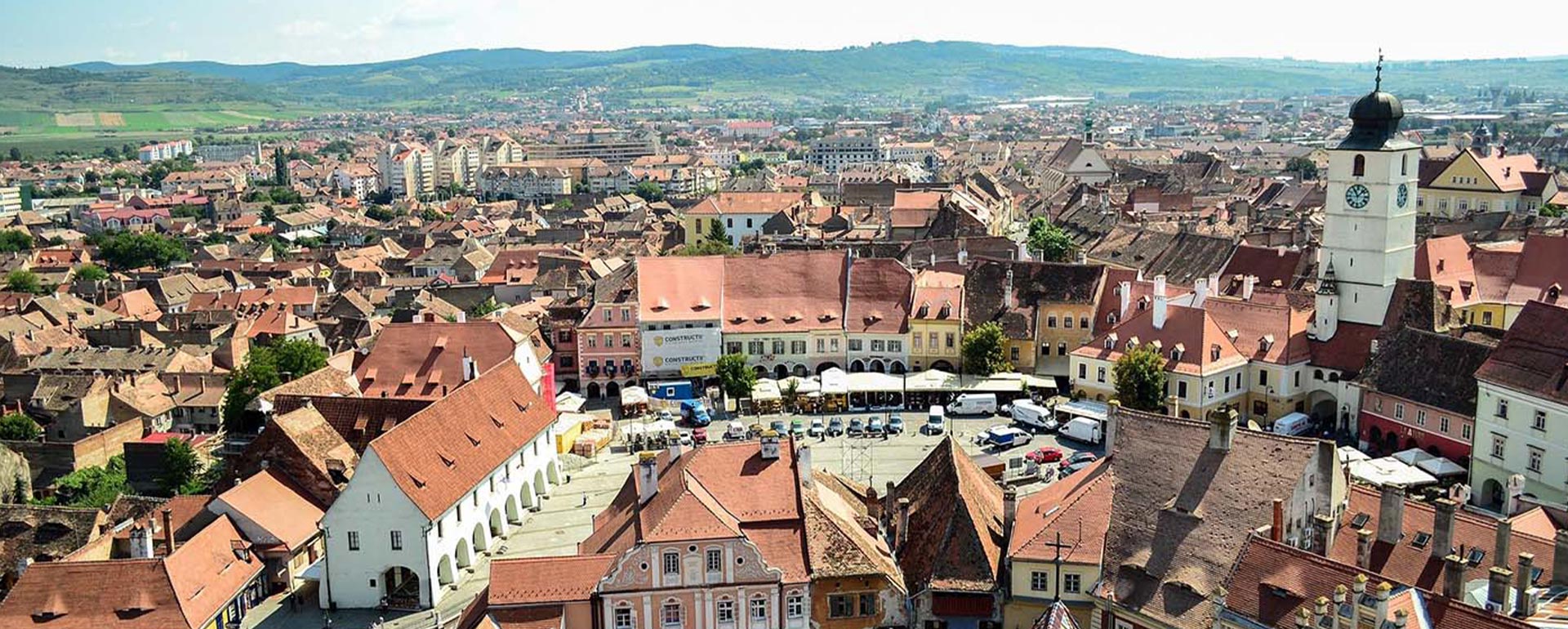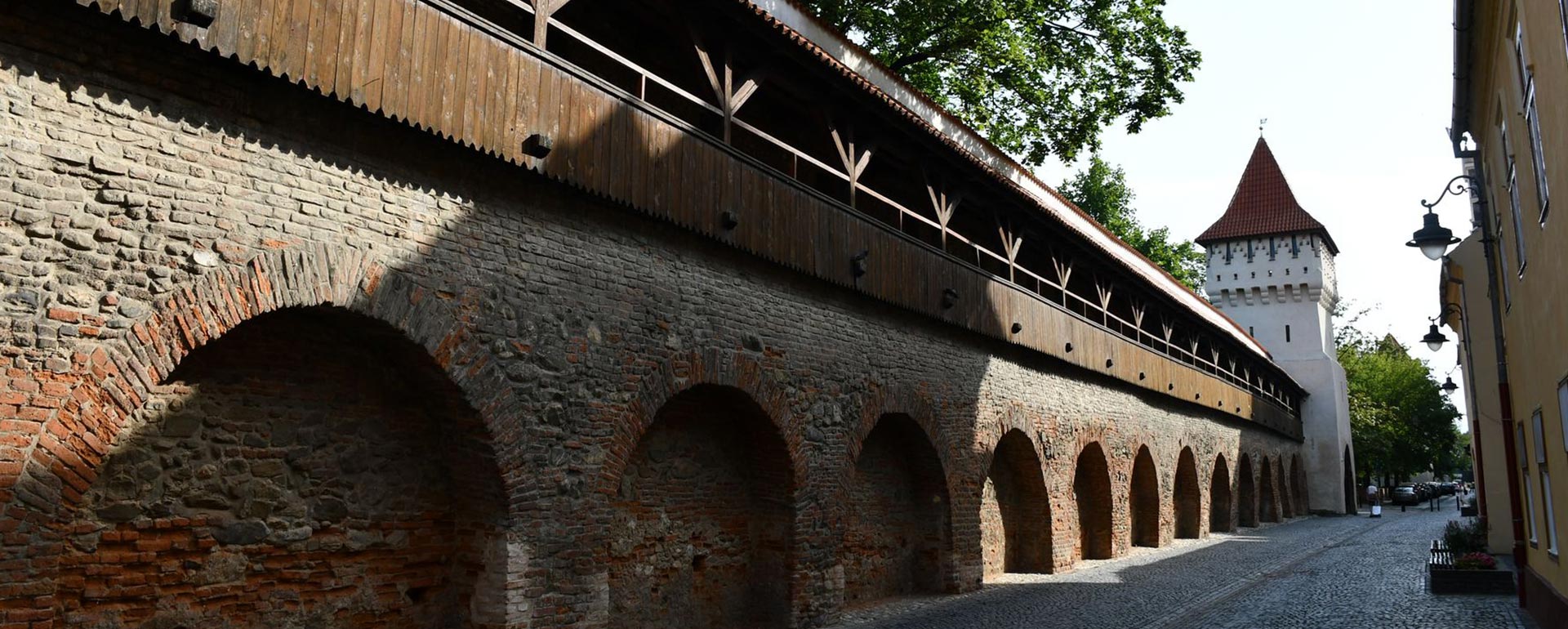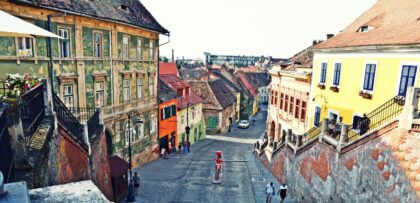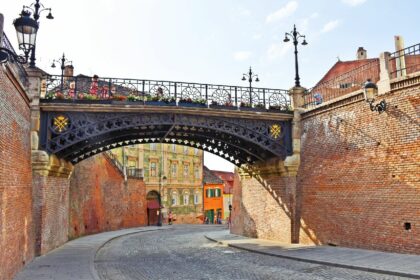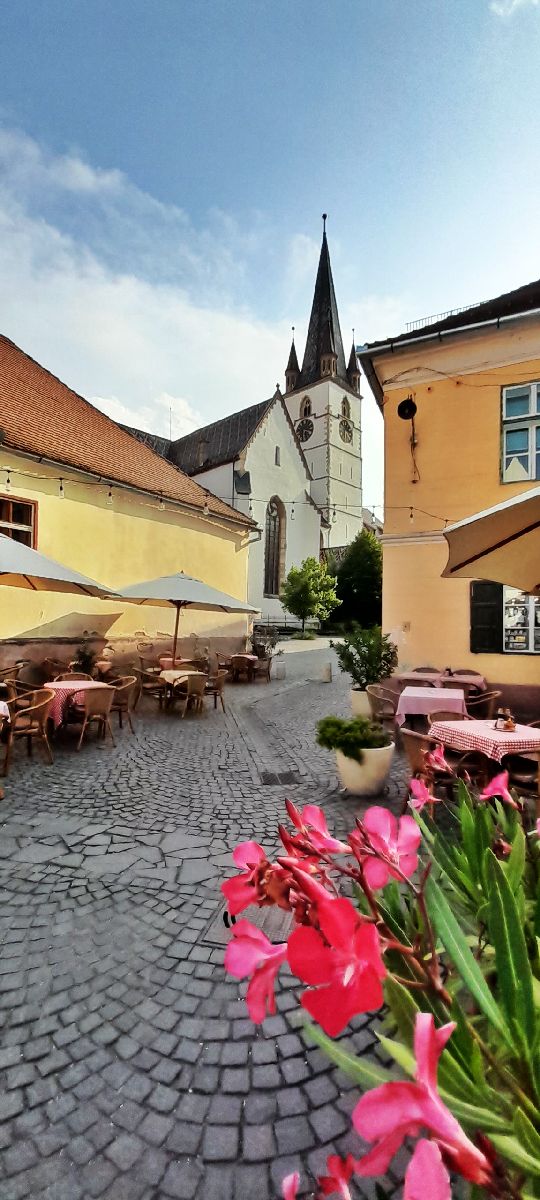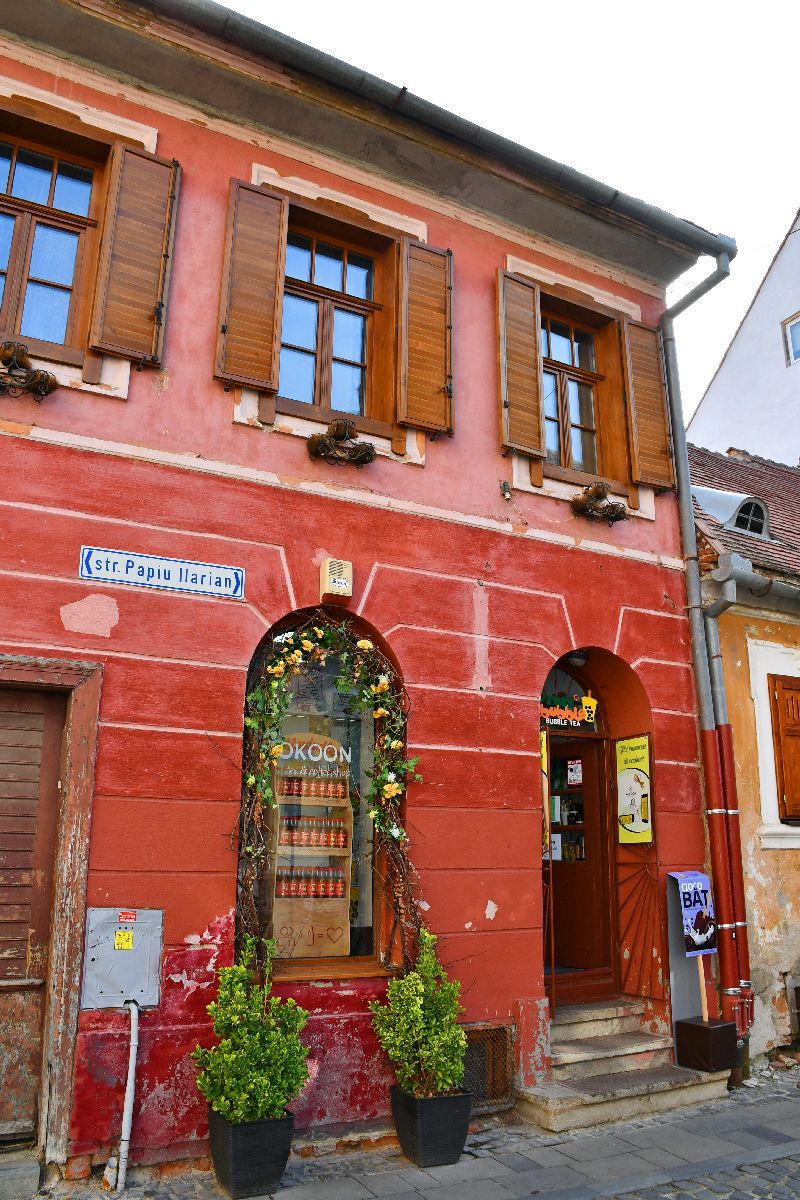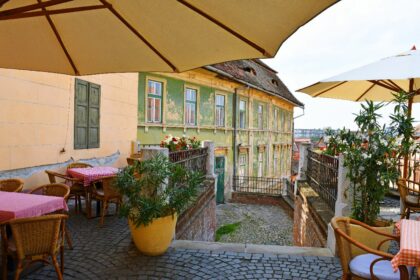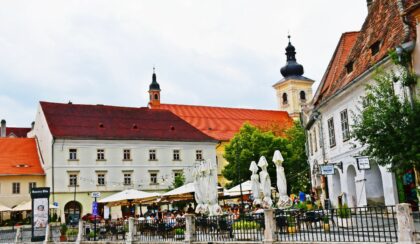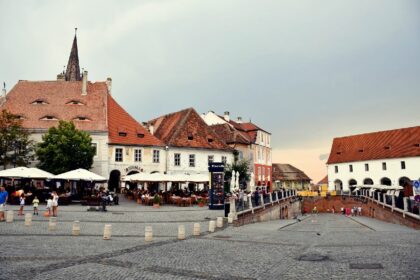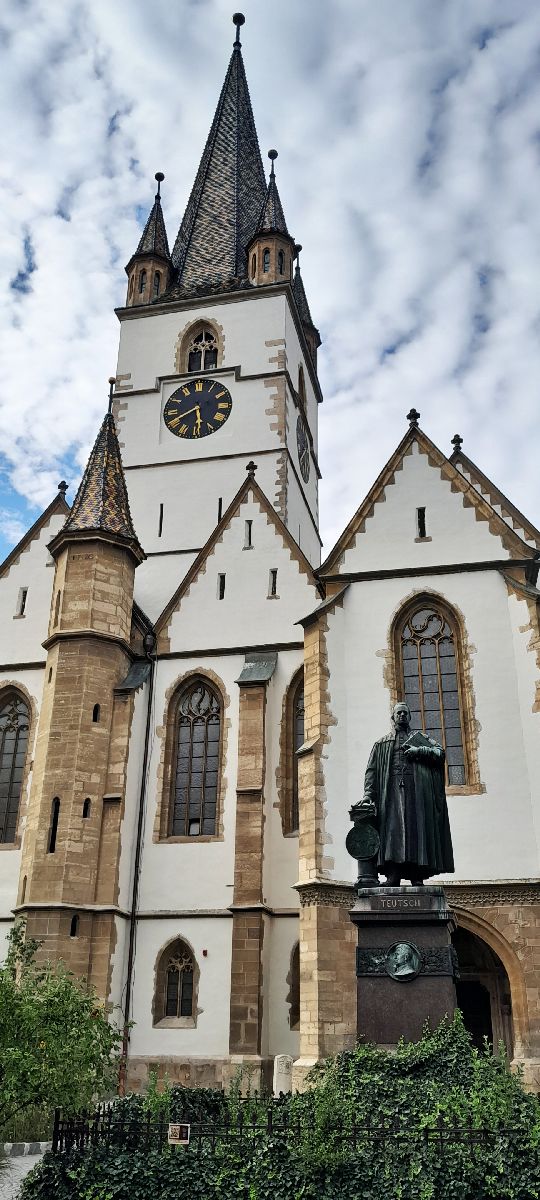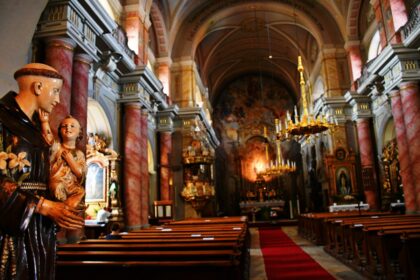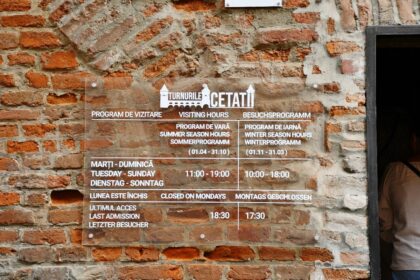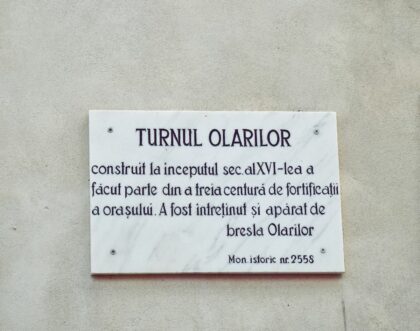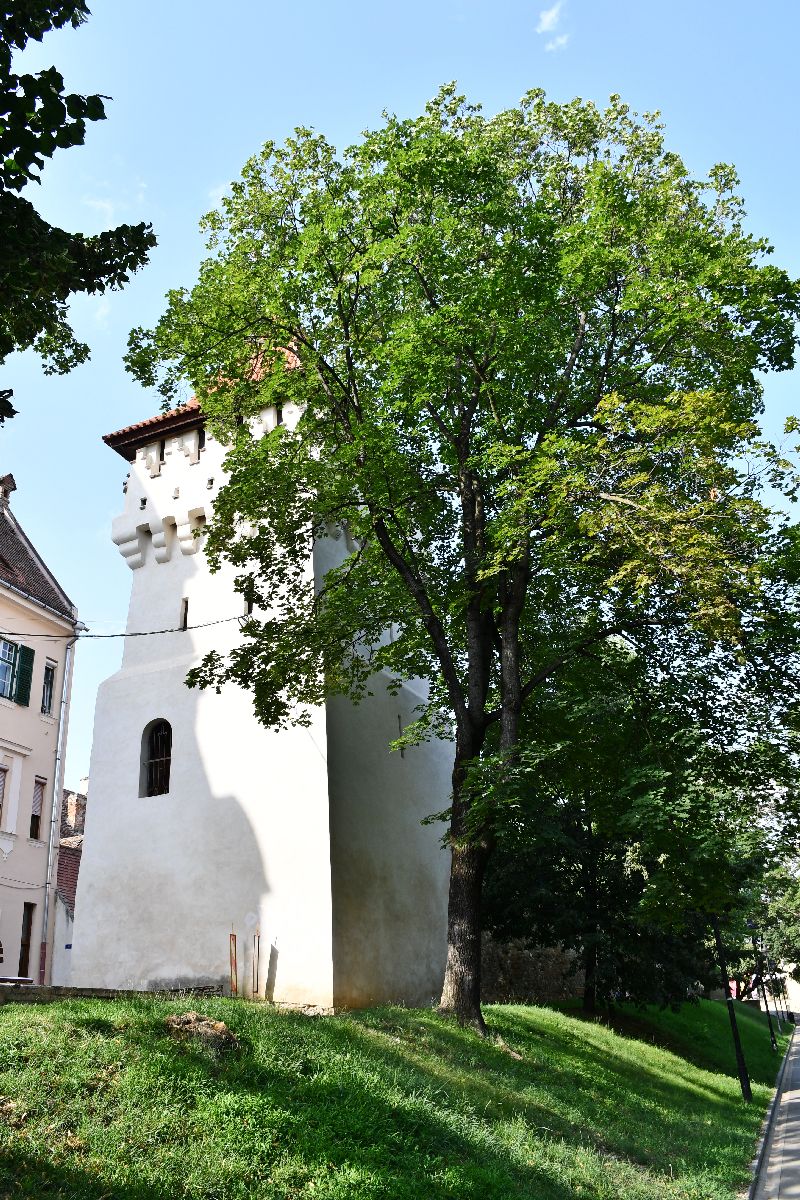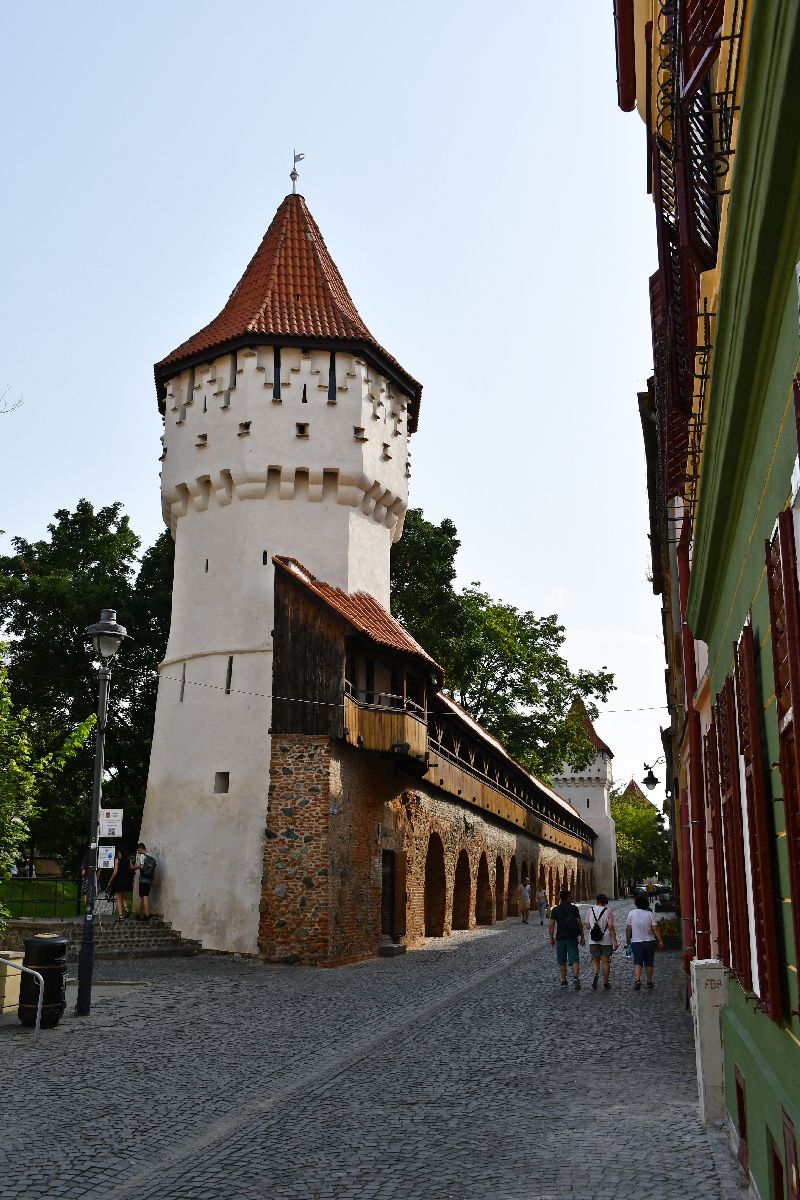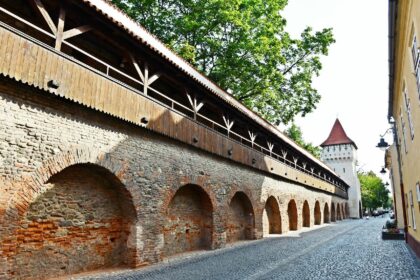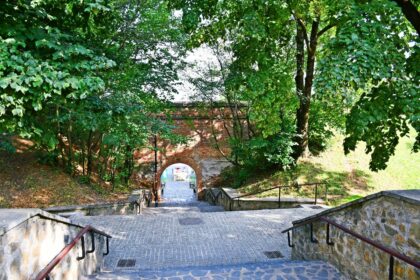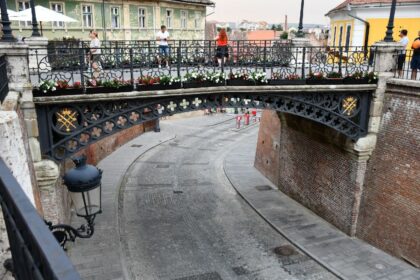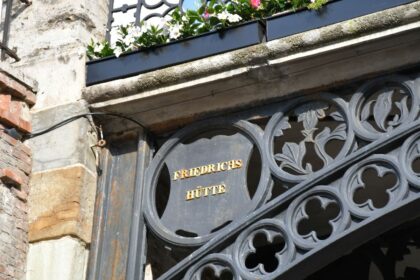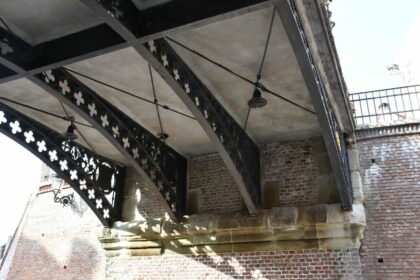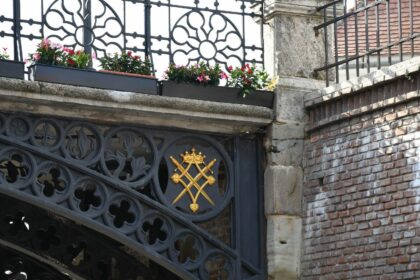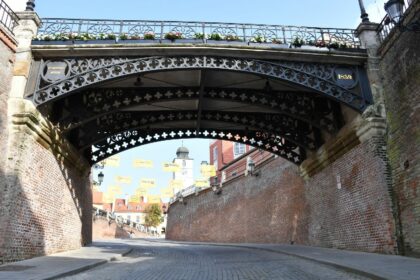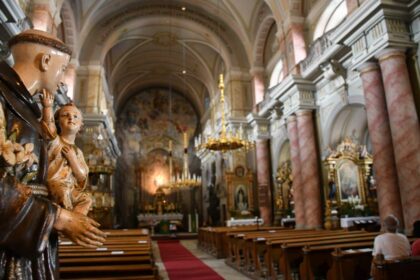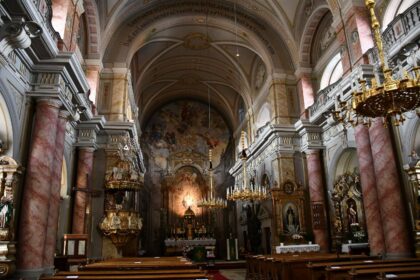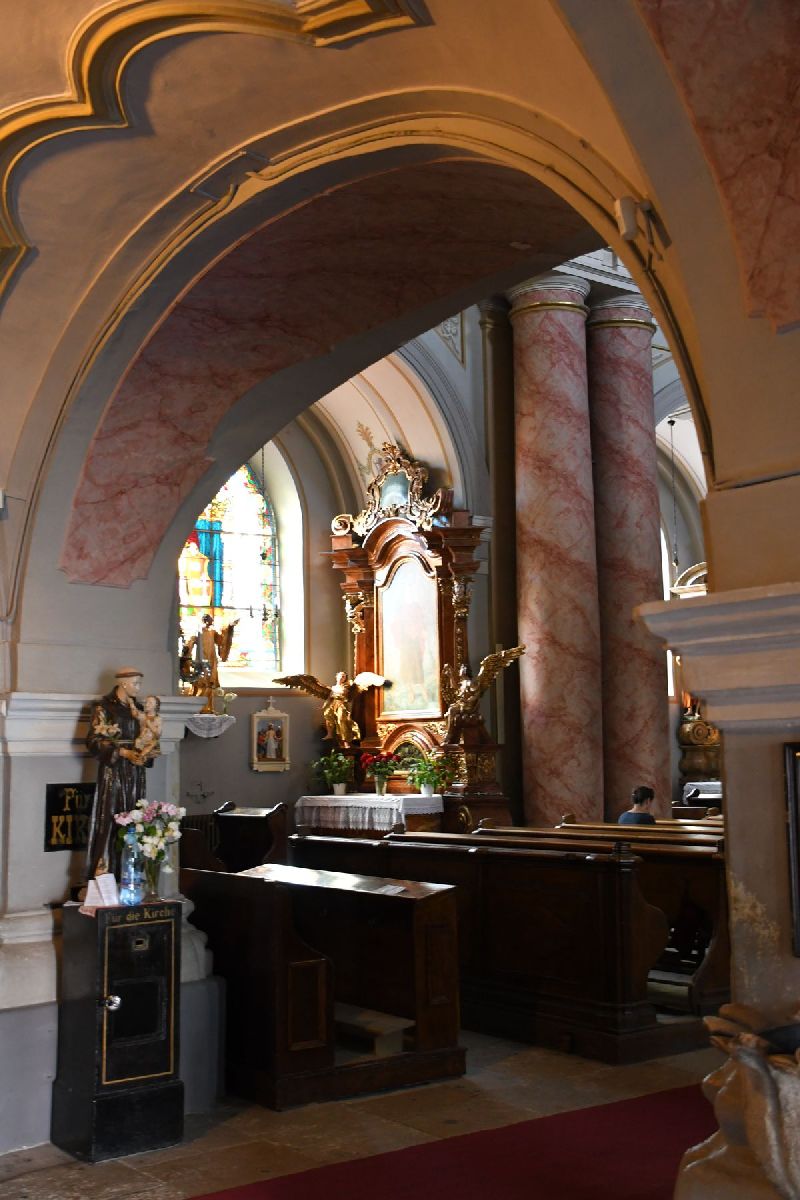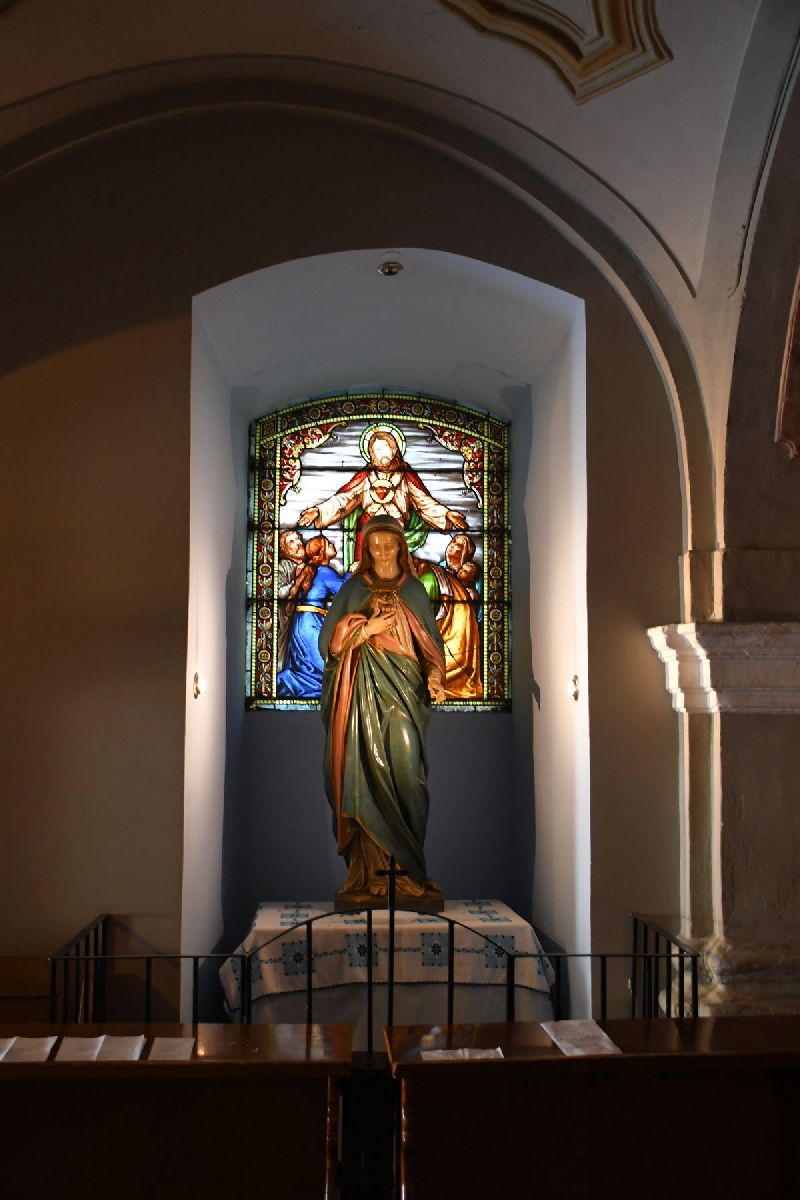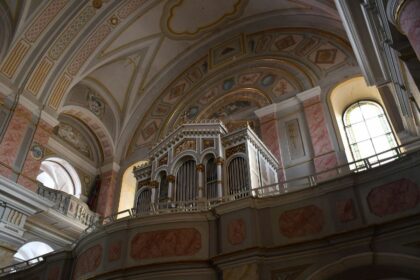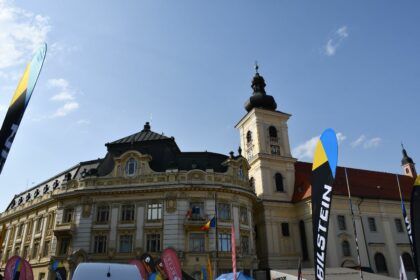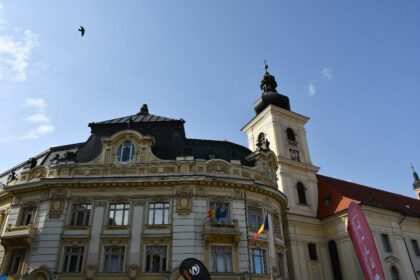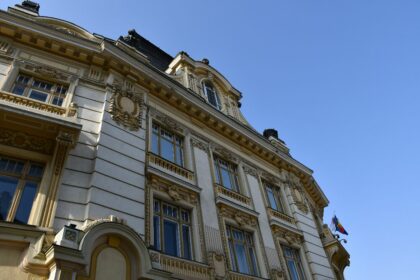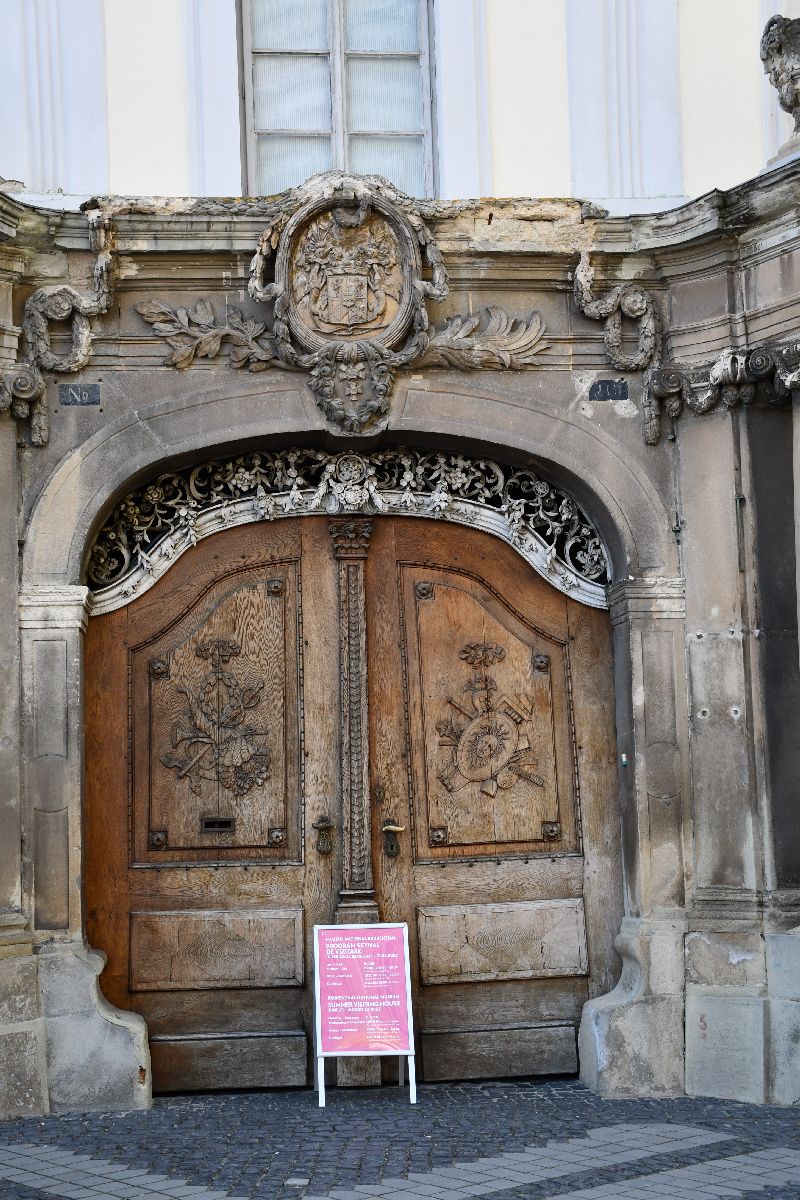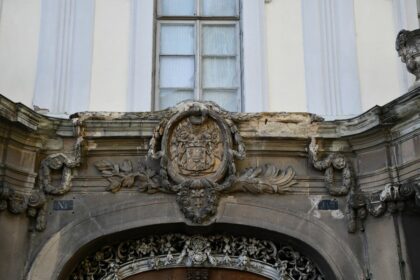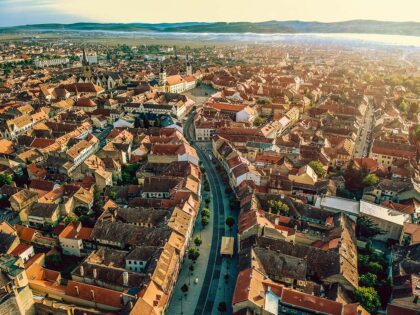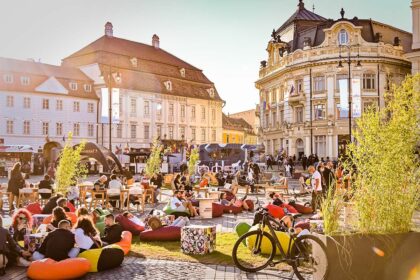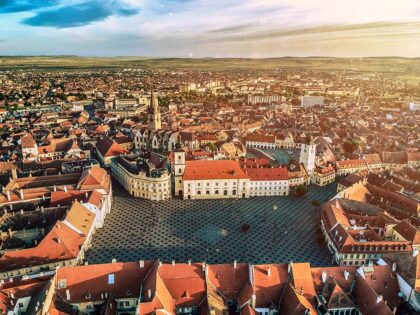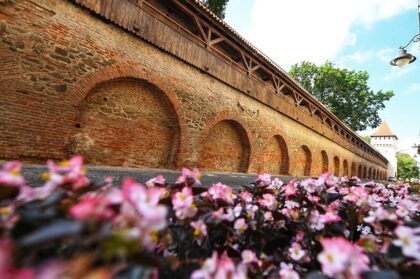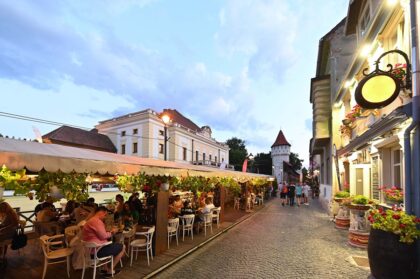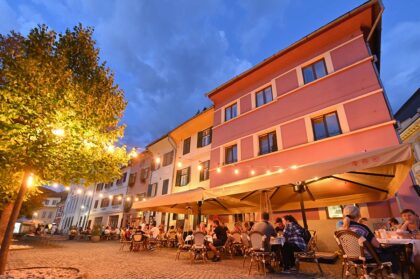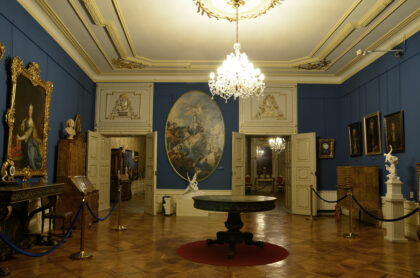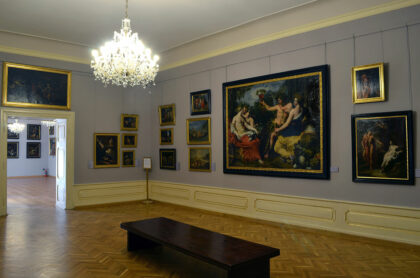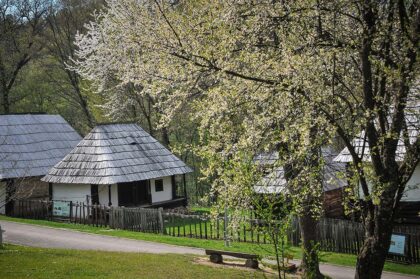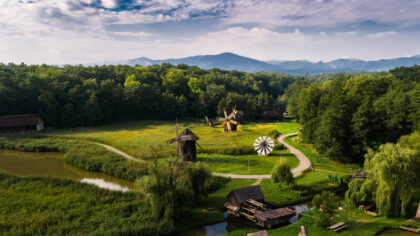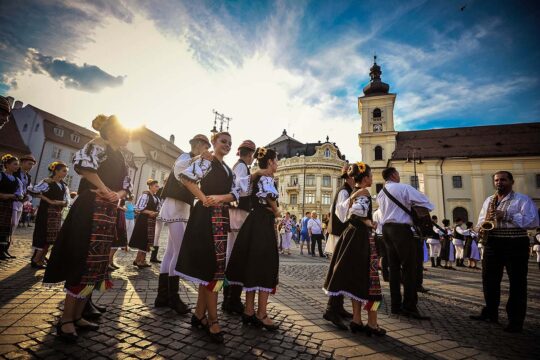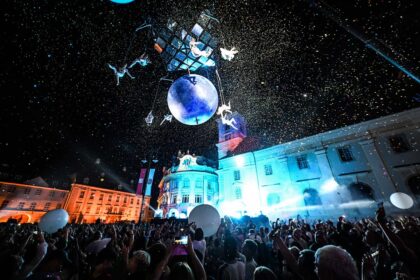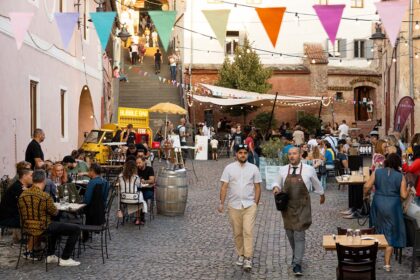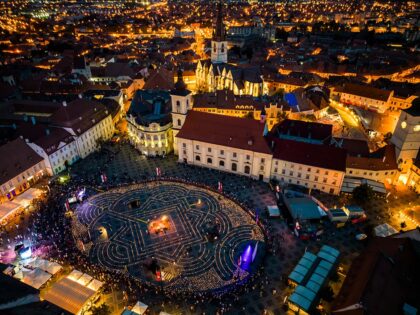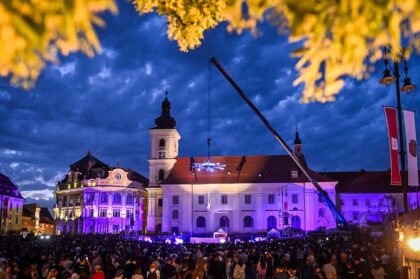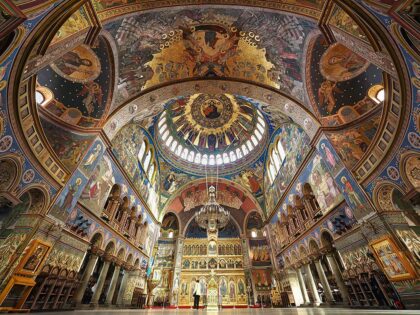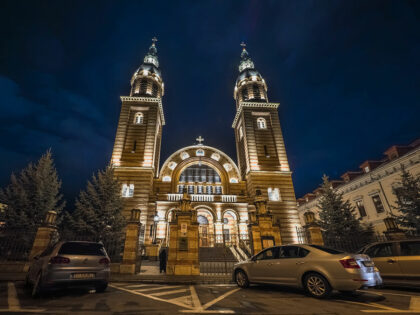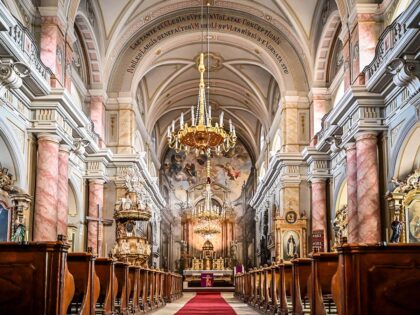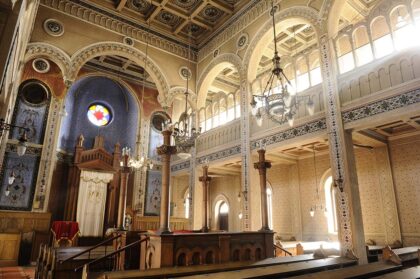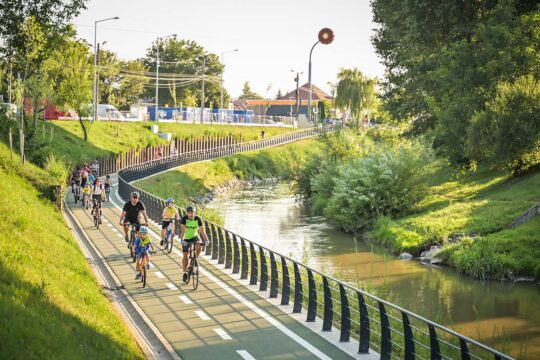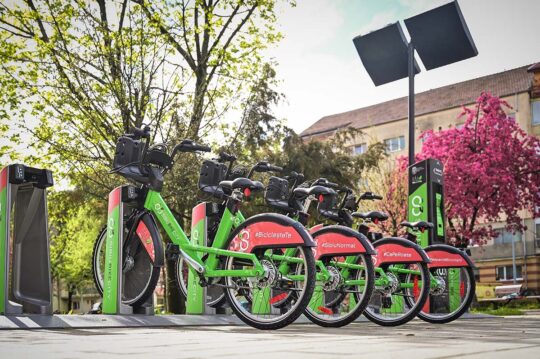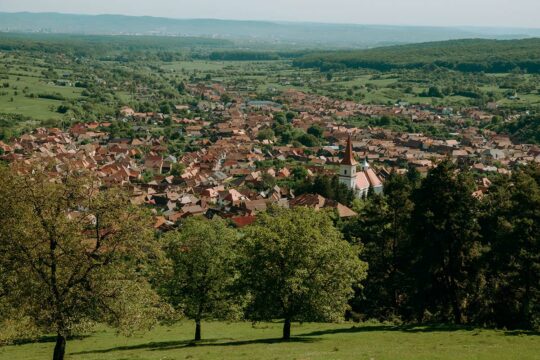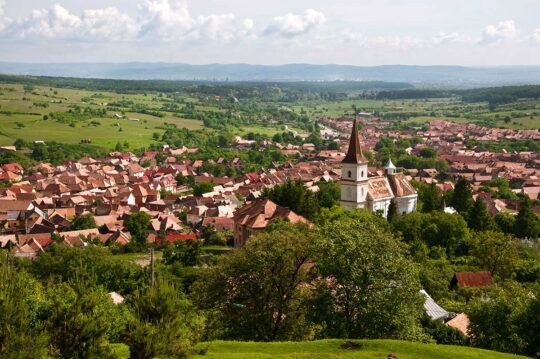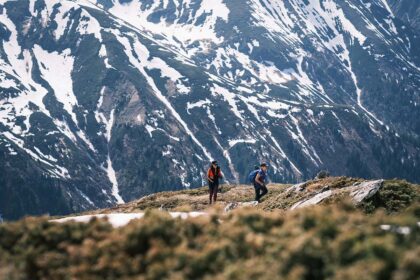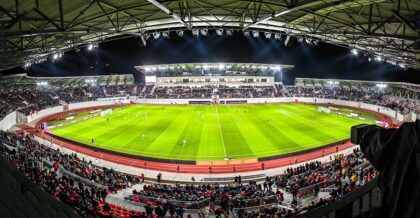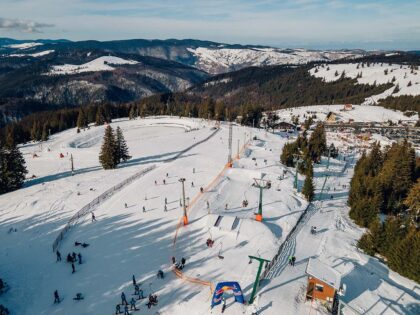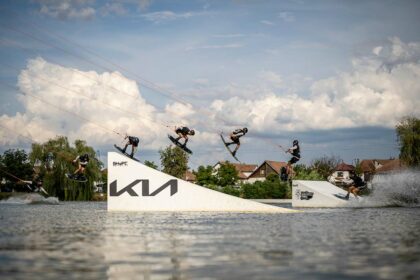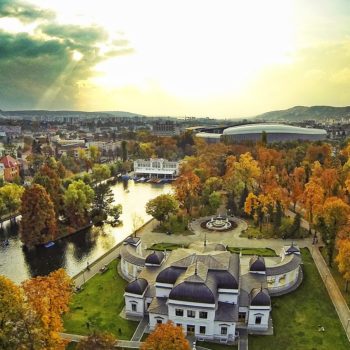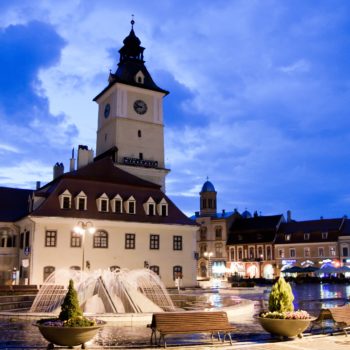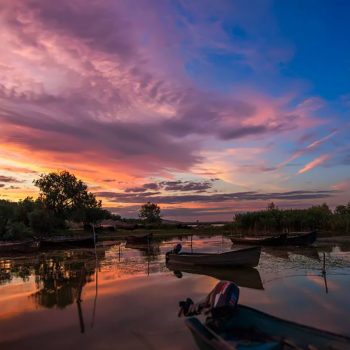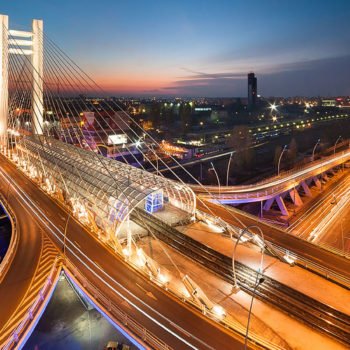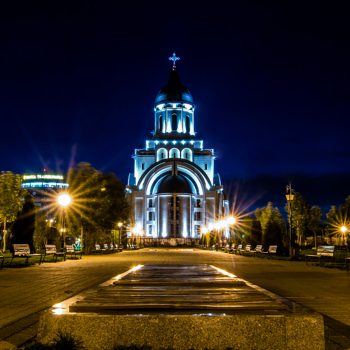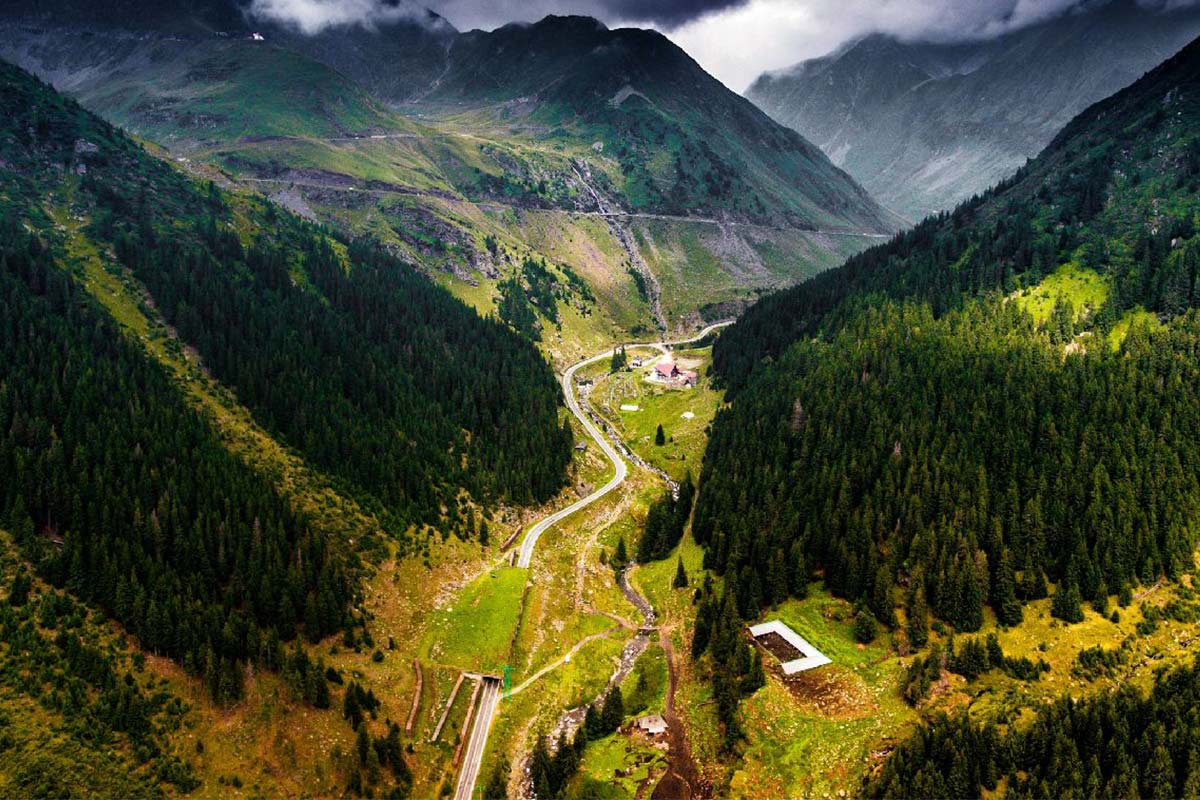Brief Description: Sibiu, also known by the German name Hermannstadt, was and is one of the most representative cities in Romania, both in terms of tourism, as well as from a cultural and economic point of view. Sibiu has a wonderful location at the foot of the Southern Carpathians. Here is the most important center of the German minority in Transylvania. The city lies on the river Cibin (Zibin), whose source is in the Southern Carpathians.
County: Sibiu
Wikipedia: Hermannstadt
Images: Red Frog
Fortress Turrets
The Carpenters’ Tower of Hermannstadt / Sibiu (in Romanian: Tourul Dulgherilor) was built in the 14th century by the Saxon carpenters’ guild of Hermannstadt. The tower was part of the third fortification belt of the town and is today the left tower of the still preserved defence and fortification wall. It is located on Fortress Street (Harteneckgasse, named after the mayor Johann Sachs von Harteneck).
The Olarilor Tower was built in the 15th century by the Saxon potters’ guild. It was also part of the third belt of fortifications of the town and stands to the right of the preserved defence and fortification wall.
The Bridge of Lies
The Bridge of Lies is one of the most famous landmarks in the city. The bridge, made in 1859 in Friedrichshütte in Hesse, took the place of an older wooden bridge and is the first cast-iron bridge in what is now Romania. Because it was also the first bridge not to stand on pillars, it was called the “Liegebrücke”. It wasn’t far from “lying” to “lying”, so it was soon given the name “Bridge of Lies”, and various legends about the naming arose.
However, one of the numerous legends associated with this bridge is the most popular. Legend has it that if someone lies while standing on the bridge, it immediately collapses. Since then, young couples have loved to walk across the bridge, whose supporting structure is decorated with rosettes and plant ornaments, to confess their love to each other, because if the bridge doesn’t collapse, it’s probably “true love”. The Hermannstadt coat of arms is attached to the south side of the bridge and the inscription 1859 or “Friedrichshütte” can be seen on the north side. The four massive stone bases at the bridgeheads support wrought iron lamps. The iron railing of the bridge consists of eight sections with a circular decoration, in a Gothic style.
Holy Trinity Roman Catholic Church
The Holy Trinity Parish Church is a baroque Roman Catholic church in Sibiu.
It is located at Piata Mare (Great Market) and forms a building ensemble with the former Jesuit residence. It is a wonderful church, which is worth a visit!
Brukenthal Museum (National Museum)
The Brukenthal Palace at No. 4 Big Square is one of the most representative buildings in Sibiu. For the construction of the palace, a rectangular plan with an inner courtyard was chosen, emphasizing the first floor. The five most important rooms (the drawing room, reception rooms and cabinets) are located here on the street side, decorated with rich wallpaper and ornate woodwork and equipped with tiled stoves. The decor of the side cabinets bears oriental features. Between 1786 and 1788 the second courtyard was also completed, with outbuildings and stables (which were later extended to house the library).
The relief carvings of the oaken gates represent the emblems of fine arts, painting and music (the owl, the shield of Minerva with the face of Medusa, the painter’s palette) and the symbol of abundance (the cornucopia of fruit and crops). the main portal leads first to the palace, then to the inner courtyard. Today the Brukenthal National Museum is located here.
The blue House
The blue town house now houses the offices and studios of the Brukenthal Museum, large ring 5.
The construction of the building is estimated at the end of the 15th century.
After 1672 the house belonged to the pharmacist Georg Vette from Gdańsk, whose property – consisting of two properties – was bought by Baron Lambert von Moringer. In 1773 the baroque-specific conversions began, which can be seen on a drawing kept in the State Archives of Sibiu.
House of Arts
You can find it at small ring 21. Built in the 14th century, this was the seat of the butchers’ guild. Later in 1765 it also served as a theater for a short time. The main facade is characterized by the regular distribution of the 8 arches on the ground floor, supported by massive brick columns that are wider at the bottom.
On the facade there is a relief coat of arms of the city from 1789, the year of restoration. The coat of arms is surrounded by a circular medallion which, together with the linear window frames and the profiled cornices, represent the only decorative elements of the façade. The building has 11 small semi-cylindrical vaulted rooms, originally used as shops and accessed through the loggia.
The Fresco Hall
In 2009, the Brukenthal Museum opened an information room in the so-called Fresco Hall on the Small Square. The building dates back to the 15th century. Valuable murals can be admired on the walls of the vaulted room on the right side of the building: a court scene dated “1631”; a biblical scene, an allegorical composition and a hunting scene. The crown of the vault bears a coat of arms executed in colored stucco.
Discover Sibiu
A city with a history of over 830 years, Sibiu is known for the unique experiences it offers, personalized for each visitor. If you are looking to taste history – breathe in the centuries still preserved in the city fortress walls, the towers or ramparts which testify to the glory of a city said to have never been defeated in battles. Are you looking for the tranquility of a city break, with a great cuisine and quaint little cafes, in a beautiful historic setting? Then Sibiu is your destination. Are you young as age or young at heart and are looking for an active vacation? Sibiu offers hundreds of indoor and outdoor cultural and sports events each year, it has a brand-new nautical sports complex, as well as ski slopes in a mountain resort 30 km away and breathtaking natural landscapes in the surroundings.
A city young since 1191, continuing to celebrate its history today
Sibiu was first mentioned in official documents in 1191. Founded by Saxon settlers coming from the Moselle Valley, its old name, still used at the present, is Hermannstadt. Today, the city still preserves a good part of the valuable built heritage of the old fortress: defense towers, parts of the fortress walls, stairs passageways, narrow cobbled streets, cozy little squares between old houses with the iconic eyes watching you from above and a large central square which is the main stage for the city life but can also be the quietest place in the old city.
Culinary experiences between the fortress walls
Open-air cafes and restaurants are part of the charm of the historical center, weather they are looking onto the Large Square, on the more intimate Small Square and Huet Square, or they are situated in passageways or narrow streets in the historical center. They are a great option for morning coffee, lunch or dinner because they allow you to breathe in the city life while enjoying good coffee or a delicious meal. Taste the local traditional cuisine while you are in Sibiu because it is more than a tasteful experience – it is a taste of history and multicultural, Romanian, Saxon and Hungarian traditions. Fair warning: you will most likely fall in love with it.
A city of culture
Sibiu has been acknowledged as a city of culture for many hundreds of years. The first theatre in Romania was built here as early as 1778 and the Brukenthal National Museum, the first in South-Eastern Europe, opened to the public in 1817. The city’s unique cultural character was and is still shaped by the multicultural environment which is celebrated and imprinted on the city’s cultural life.
So, Sibiu has the history of a cultural city, but also the present of one. In 2004, the city received an important impulse when it was awarded the title of European Capital of Culture for the year 2007. Since then, the city’s cultural life flourished once more, due to the creativity and the involvement of local cultural institutions and private organizers of events, but also due to the support of the local administration which finances cultural events with considerable amounts.
Today, public spaces and indoor locations host hundreds of events each year, from large festivals and concerts to exhibitions, conferences, and book launches. These make the city the perfect location for those looking to see a good play as well as for those who wish to experience the unique vibe of an open-air festival.
The International Theatre Festival in Sibiu is definitely the city’s largest and most emblematic event, being one of the most important theatre festivals worldwide. For 10 days, at the beginning of summer, the Festival makes the city vibrate with performance arts, with over 800 open-air performances and indoor events of all types. Sibiu turns into a huge stage for art and culture, creating a unique atmosphere.
Several other festivals take place in Sibiu each year. From classical, jazz or rock music to pop music, the city offers something to everybody’s taste.
An ecumenical location with historic churches
A multicultural location, Sibiu also celebrates religious diversity. In the area of the historical center, there is an Orthodox Cathedral, an Evangelical Cathedral, a Roman Catholic Church, a Greek-Catholic church, a Reformed church, a Franciscan church, a Lutheran Church and a Synagogue, all historical buildings of great beauty and a wonderful architecture. Visit these wonderful monuments as a walk back in history, as well as a glimpse into the multiconfessional nature of the city.
Sibiu bike city – explore it sustainbly, in a pleasant bike ride
Sibiu is also a modern, European city, going green for sustainable, environmentally friendly mobility. In addition to a completely updated and modern public transportation system, we created a network of bike tracks and 57 public bike rental stations all over the city in order to encourage people to use bikes to move inside the city, including tourists.
If the historical center is best visited on foot, the rest of the city is perfect for exploring on a bike. Start you trip in the historical center, go along the bike tracks on the riverbanks, take a break in the new Belvedere Park to enjoy a bird’s eye view and move on to Dumbrava Forest where you can visit the oldest Zoo in the country and the open-air, traditional civilization ASTRA Museum. If you are adventurous, continue your bike trip to the surroundings, through a natural landscape that will most certainly recharge your batteries.
Explore the surrounding traditional villages and cuisine
Romanian and Saxon traditional villages around Sibiu are a unique experience in themselves so you might want to set aside a few days to visit them. Traditional households, crop fields and vegetable gardens, hearty meals at the end of a workday, Sunday church, village dances and festivals at the end of the week – definitely a different pace of life!
Hiking? Skying? Watersports? An active vacation In Sibiu
When you feel like taking a breath of crisp air, enjoying majestic natural landscapes and the peace of the hills and mountains, go hiking! In Sibiu, you have that option as well. There are several trails in place, of different complexity, from light walks on the hills, to mountain hikes. All followed by a picnic or a brunch with traditional dishes.
Sibiu is situated at around 30 km from the Păltiniș mountain resort, the oldest in the country, situated in the Carpathian Mountains, at an altitude of 1442 m. You can ski or snowboard on the slopes, you can spend a few hours in the adventure park in the forest or just enjoy an apres-ski hot drink.
Watersking, SUP and kayaking on Binder Lake is also an option, for the warmer seasons. The brand-new water sports complex is at a 10 minutes distance from the city center.
History of Sibiu
The first German settlers probably arrived in the area in 1147. They settled on the hill above the Zibin River, today’s Upper Town. The first written mention comes from the year 1191 under the name praepositum Cibiniensem. From 1223 the Latin name “Villa Hermanni” and from 1241 the German equivalent Hermannsdorf is documented. The name probably derives from the name of the settlers, who named their new place after Archbishop Hermann II or a locator named Hermann.
Favored by its location at the intersection of two important road connections, the settlement grew rapidly and soon had 600 inhabitants, which was already a considerable size for a village at the time. In 1241 Herrmannsdorf was plundered and destroyed during a Mongol attack. However, the village was soon able to recover and developed into a city. The current name of Herrmanstadt was first mentioned in writing in 1401.
Over time, Herrmanstadt was often besieged and attacked by the Turks, but they never managed to capture the city.
After the annexation of Transylvania to Austria, the old laws according to which no members of other nations were allowed to settle in the city fell due to a decree by Emperor Joseph II in 1781. As a result, Hungarians and Romanians could now also acquire property within the city walls.
However, Sibiu remained the political center of the Transylvanian Saxons and the seat of the Universitas Saxonum, a kind of Transylvanian parliament that took care of Transylvanian-Saxon affairs until 1878 and was a symbol of the political unity and independence of the Transylvanian Saxons. When it was reorganized into the dual monarchy of Austria-Hungary, Sibiu was included in the Kingdom of Hungary and was under the royal government in Budapest until 1918.
After the First World War, in 1920 the victors of the war, against the protest of the Hungarians, fixed in the “Treaty of Trianon” that Transylvania remained with Sibiu with Romania. Even after that, the city remained German. Only at the end of the 1930s did the Transylvanian Saxons lose the absolute majority in their metropolis.
Due to investments worth millions from Austria and Germany, the city’s economy has been experiencing an unabated boom since the early 2000s, which is also being boosted by growing tourism and construction investments in the old town and public infrastructure.
The city has an international airport (Aeroportul Internațional Sibiu), which offers direct flights to numerous European cities.


